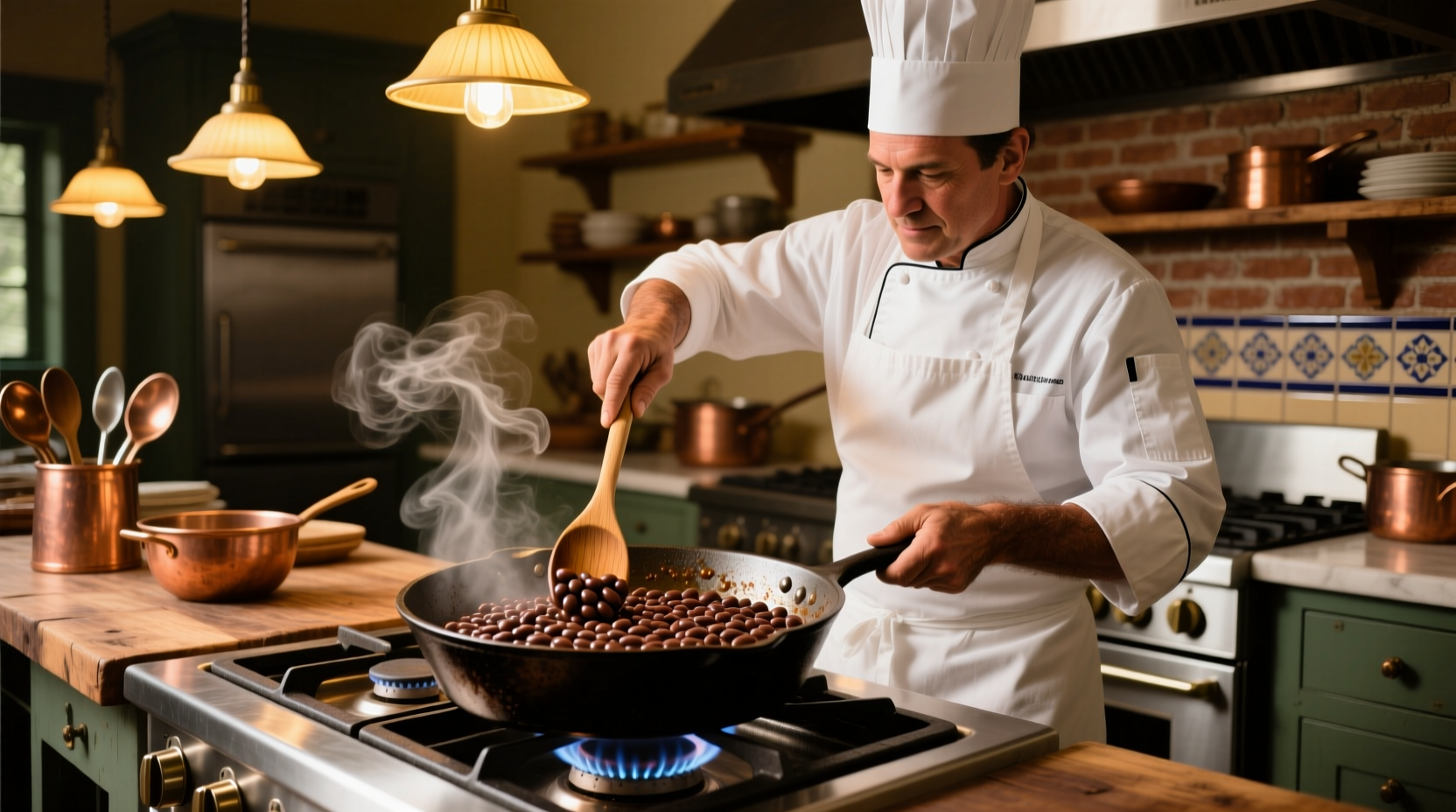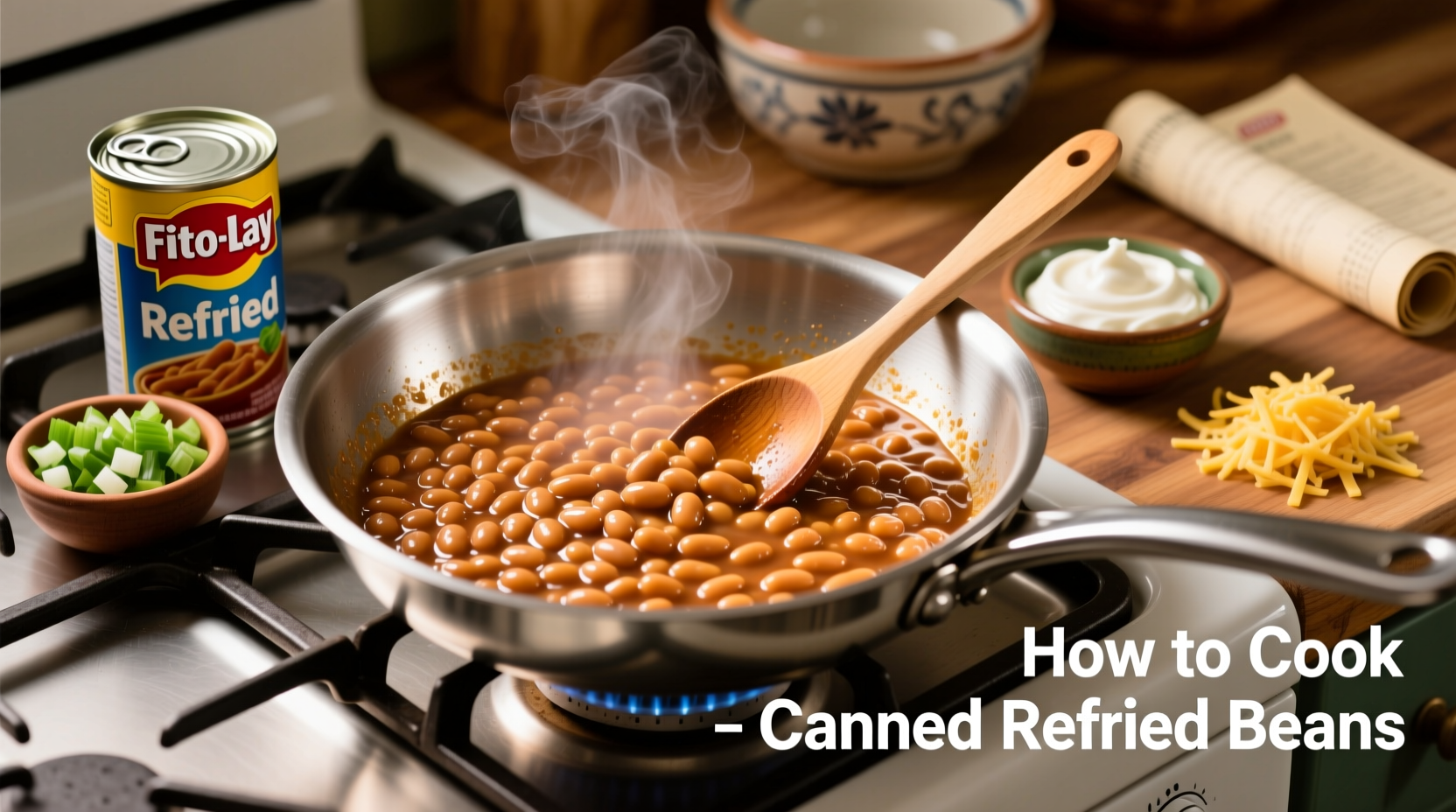Many home cooks settle for the flat, one-dimensional flavor of plain canned refried beans straight from the can. But with a few simple techniques rooted in traditional Mexican cooking methods, you can elevate this pantry staple into a dish that tastes freshly made. According to food science principles from the FDA's food preparation guidelines, proper heating and seasoning techniques significantly improve flavor absorption in bean dishes.
Why Canned Refried Beans Need Enhancement
Canned refried beans are convenient but often lack the depth of flavor found in traditionally prepared versions. The canning process requires preservatives that can mute natural bean flavors, and manufacturers often under-season to accommodate various dietary preferences. Maya Gonzalez, Latin American cuisine specialist with over a decade of field research across Mexico, explains: "Traditional Mexican cooks understand that refried beans require careful layering of flavors and proper texture development - something that gets lost in mass production."

Choosing Your Canned Beans Wisely
Not all canned refried beans are created equal. Before you begin cooking, select the best base for your dish:
| Brand Type | Texture | Flavor Profile | Best For |
|---|---|---|---|
| Traditional Pinto | Thick, slightly grainy | Mild bean flavor | Authentic Mexican dishes |
| Restaurant Style | Smooth, creamy | Enhanced seasoning | Quick weeknight meals |
| Low-Sodium | Variable | Very mild | Custom flavor development |
Essential Tools for Perfect Refried Beans
You don't need specialized equipment, but these tools make the process easier:
- Medium cast iron or non-stick skillet (provides even heating)
- Wooden spoon or silicone spatula (won't scratch pans)
- Measuring spoons (precision matters for seasoning)
- Small bowl for mixing liquid ingredients
Step-by-Step Cooking Process
1. Proper Warming Technique
Never microwave canned refried beans directly - this creates uneven heating and texture problems. Instead:
- Empty contents into skillet over medium-low heat
- Stir constantly for first 2 minutes to prevent scorching
- Reduce heat to low once beans begin to warm through
2. Flavor Layering Method
Follow this sequence for maximum flavor development when cooking canned refried beans:
- Add 1 tablespoon of oil or bacon fat to the warming beans
- Incorporate 2 minced garlic cloves after 3 minutes of warming
- Stir in 1/4 cup finely diced onion when beans become pliable
- Add 1/2 teaspoon cumin and 1/4 teaspoon smoked paprika
- Season with salt gradually (start with 1/4 teaspoon)
3. Texture Adjustment Secrets
The perfect refried bean texture sits between spreadable and scoopable. Achieve this by:
- Adding liquid gradually: Start with 2 tablespoons of broth, water, or milk
- Mixing thoroughly after each addition
- Cooking for 5-7 minutes after liquid addition to allow absorption
- Testing consistency by dragging spoon through center - it should slowly fill in
Avoiding Common Cooking Mistakes
Even experienced cooks make these errors when preparing how to cook canned refried beans:
Problem: Beans are too watery
Solution: Continue cooking over low heat while stirring frequently. The beans will naturally thicken as excess moisture evaporates. Avoid adding more beans to thicken, as this dilutes flavor.
Problem: Beans stick and burn
Solution: Maintain medium-low heat throughout cooking. If beans begin sticking, immediately remove from heat, add 1-2 tablespoons of liquid, and scrape bottom of pan before returning to lower heat.
Problem: Bland flavor despite seasoning
Solution: Add acid to brighten flavors - try 1 teaspoon of lime juice or vinegar. Acid helps release flavor compounds that may be muted in canned products, as documented in USDA food science research.
Serving Suggestions for Elevated Refried Beans
Take your how to prepare canned refried beans results to the next level with these serving techniques:
- Temperature matters: Serve hot but not scalding - around 160°F provides optimal flavor release
- Garnish strategically: A drizzle of good olive oil and fresh cilantro enhances both flavor and presentation
- Texture contrast: Top with crumbled queso fresco for creamy-salty contrast
- Traditional pairings: Serve alongside grilled meats, in tacos, or as a side with Mexican rice
Storage and Reheating Guidelines
Proper storage maintains quality when learning how to cook canned refried beans:
- Cool completely before refrigerating (within 2 hours of cooking)
- Store in airtight container for up to 5 days
- Freeze in portion-sized containers for up to 3 months
- Reheat gently with added liquid to restore creaminess
Traditional Evolution of Refried Beans
Understanding the history of refried beans provides context for modern preparation methods:
- Pre-Columbian Era: Aztecs and Mayans cooked beans in clay pots over open fires
- Spanish Colonial Period: Introduction of lard and European cooking techniques
- 20th Century: Commercial canning made refried beans widely accessible
- Modern Day: Health-conscious variations with vegetable oils and reduced sodium











 浙公网安备
33010002000092号
浙公网安备
33010002000092号 浙B2-20120091-4
浙B2-20120091-4